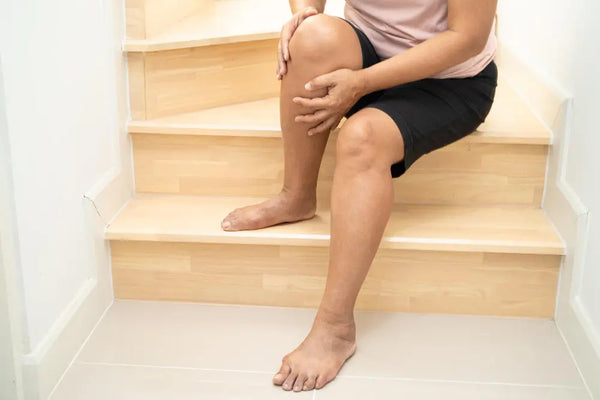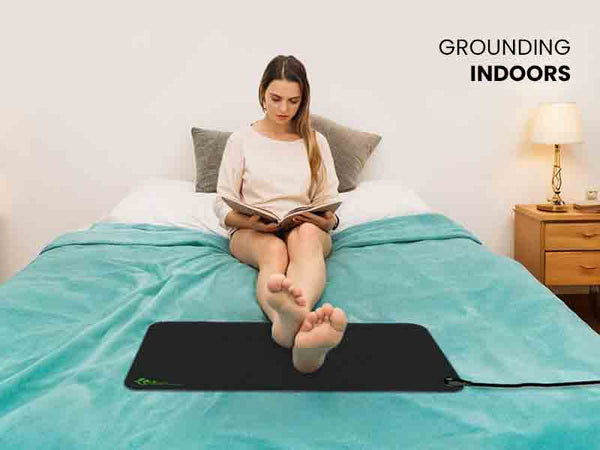Grounding for Sleep: Natural Relief for Insomnia and Sleepless Nights

Introduction
Millions of people struggle with insomnia and sleepless nights. Stress, screens, and modern lifestyles disrupt our natural rhythms, leaving us restless. While many turn to pills or therapies, there’s a simple, natural solution often overlooked: grounding for sleep.
Also called earthing, grounding reconnects your body with the Earth’s energy. Emerging research shows it may help regulate sleep patterns, reduce stress, and improve recovery—making it a promising tool for those searching for natural insomnia treatment.
Why So Many People Struggle with Sleep Today
Lack of sleep is more than feeling tired—it’s a global health problem.
- Insomnia affects an estimated 10–30% of adults worldwide.
- Sleep disturbances are linked to chronic stress, overexposure to screens, and EMFs (electromagnetic fields).
- Sleeplessness increases the risk of anxiety, depression, heart disease, and diabetes.
- Traditional insomnia therapies often involve medications, but these may bring side effects or dependency. That’s why natural remedies like grounding are attracting interest.
What is Grounding and How It Affects Sleep?
Grounding means making direct contact with the Earth—walking barefoot on grass, sand, or soil—or using indoor tools like a Grounding Mat®. This connection allows free electrons from the Earth to flow into your body, balancing your internal electrical state.
How this helps sleep:
- Reduces cortisol (stress hormone) → calmer mind before bed.
- Improves circadian rhythm → helps you fall asleep naturally.
- Lowers body voltage from EMFs → reduces nervous system overstimulation.
- Supports melatonin balance → critical for deep sleep cycles.
When used consistently, grounding may reduce sleep disturbances and help ease the cycle of sleepless nights.
Scientific Evidence Linking Grounding to Better Sleep
Grounding isn’t just wellness hype—it’s supported by growing scientific data.
- Cortisol Study (2004): Grounded subjects showed normalized cortisol rhythms and reported improved sleep quality.
- Double-Blind Study (2011): Participants using grounding devices experienced better sleep, reduced pain, and less stress.
- Body Voltage Research: Measured reductions in human body voltage when grounded, linked to improved relaxation and sleep readiness.
These findings make grounding a potential insomnia treatment without drugs or side effects.
How to Try Grounding for Sleep at Home
You don’t need to move to the countryside—grounding is simple.
- Go barefoot outdoors: Spend 20–30 minutes walking on grass or soil daily.
- Practice before bed: Try meditation or stretching while grounded.
- Use indoor tools: A Grounding Mat® on your bed or under your feet allows you to stay connected all night.
Stay consistent: Benefits build over time—many people report improved sleep within weeks.
Additional Lifestyle Tips for Better Sleep
Grounding works best when paired with good sleep hygiene:
- Keep a regular bedtime.
- Avoid screens before bed.
- Reduce caffeine and alcohol intake.
- Sleep in a cool, dark room.
Combine these habits with earthing grounding, and you’ll strengthen your body’s ability to rest deeply.
Conclusion
Grounding for sleep is a simple, natural practice that may help reduce insomnia, sleepless nights, and sleep disturbances. By calming cortisol, balancing circadian rhythms, and lowering body voltage, grounding supports deep, restorative sleep.
Instead of relying solely on medications, consider adding grounding to your bedtime routine. With consistent practice—whether barefoot on grass or using a Grounding Mat®—you can experience more restful nights and brighter mornings.





 Whatsapp us!
Whatsapp us! 